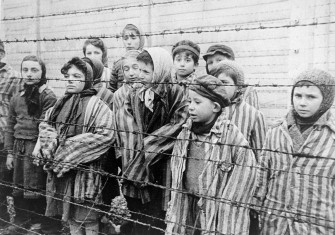What’s in a Name?
When people are returned to the historical record, they regain their humanity.

Auschwitz Memorial is a Twitter feed I was introduced to by the novelist and critic Linda Grant, which is run by staff at the Auschwitz Museum. Each entry – and at least one is posted daily – starts with a date, usually that of the person’s birth: ‘9 April 1938: Jewish twin girls Annette and Paulette Sklarz were born in Metz.’ ‘3 May 1938: A Czech Jewish boy, Ivan Fink, was born in Brandys nad Labem.’ ‘3 May 1930: A Dutch Jewish girl, Meriam Kok, was born in Amsterdam.’ These are followed by another date, that of their death at Auschwitz or another Nazi concentration camp. The entries are always accompanied by a photograph: sometimes they are the all too familiar official images taken by the camp authorities of people in the characteristic striped uniform or, more frequently, they are photographs of people living another life pre-war.







